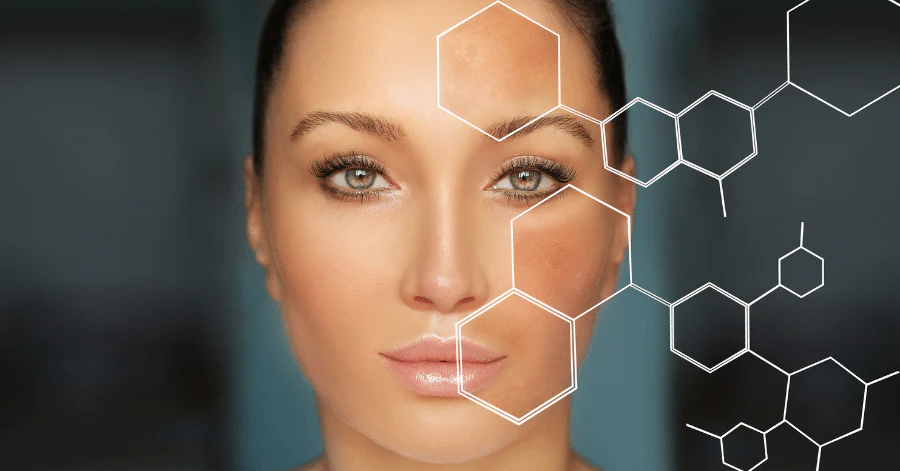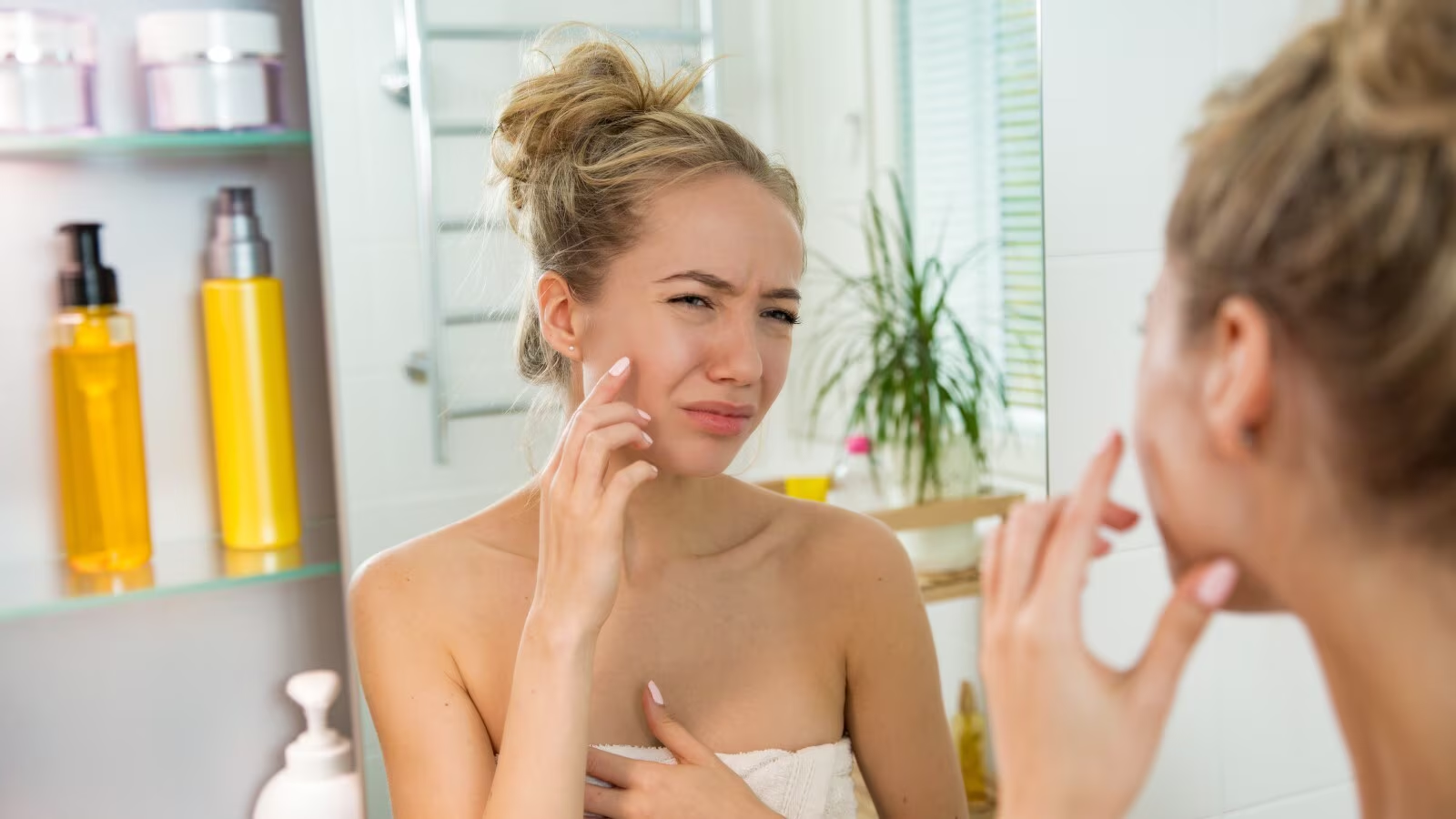Pigmentation Problems? Here’s What Dermatologists Recommend To Treat This

Pigmentation Problems? Here's What Dermatologists Recommend To Treat This
How you define pigmentation on skin ?
Pigmentation on the skin refers to the color of your skin, and when you hear “skin pigmentation” in skincare, it typically refers to areas where skin color has changed due to an increase or decrease in melanin (the pigment responsible for skin color). Pigmentation issues can range from dark spots to light patches, and they’re usually the result of various factors like sun exposure, inflammation, or hormonal changes.
Here are the main types of pigmentation issues:
1. Hyperpigmentation
This is when certain areas of your skin get darker than usual due to excess melanin production. Common causes include:
- Sun exposure (leading to sunspots or age spots)
- Post-inflammatory hyperpigmentation (PIH): Dark spots left after acne or other skin injuries
- Melasma: Brown patches often triggered by hormonal changes (like pregnancy or birth control)
- Freckles: Small, dark spots, often genetic or sun-induced
2. Hypopigmentation
This is when the skin becomes lighter than usual due to a loss of melanin. It can occur after inflammation, trauma, or as part of conditions like:
- Vitiligo: A condition where patches of skin lose pigment
- Post-inflammatory hypopigmentation: Lighter spots that appear after skin healing
🧐 How to Identify Pigmentation:
- Dark spots or uneven skin tone (from sun, acne scars, etc.)
- Light spots or patches of lighter skin (from damage or conditions like vitiligo)
- Visible areas like cheeks, forehead, upper lip, and jawline can often show hormonal pigmentation (like melasma) or sun-related pigmentation.
🔍 Managing Pigmentation:
- Prevention: Sunscreen is crucial to prevent further darkening.
- Treatment: Brightening ingredients like vitamin C, niacinamide, retinol, and AHAs can help fade pigmentation over time.
What skincare is best for pigmentation?
Treating pigmentation effectively requires a combination of brightening, exfoliating, and protective ingredients that target the root causes like excess melanin production, sun damage, or inflammation. Here’s a breakdown of the best skincare products and ingredients for treating pigmentation:
✅ 1. Sunscreen (AM)
Prevention is key — without sunscreen, any pigmentation treatment will be much less effective, and your skin could darken further.
- Broad-spectrum SPF 30 or higher is a must, every day.
- Choose a mineral sunscreen (like zinc oxide) or non-comedogenic formula for acne-prone skin.
🧴 2. Brightening Ingredients
Vitamin C
- Why it works: Helps brighten dark spots, fight free radical damage, and inhibit melanin production.
- How to use: Use in the morning after cleansing and before sunscreen.
- Popular options: Ascorbic acid, ascorbyl glucoside, tetrahexyldecyl ascorbate.
Niacinamide
- Why it works: Reduces the appearance of dark spots, evens out skin tone, and is anti-inflammatory.
- How to use: Can be used morning and night.
- Look for products with 5% niacinamide for best results without irritation.
Alpha Arbutin
- Why it works: A gentler alternative to hydroquinone, it helps reduce dark spots by inhibiting melanin production.
- How to use: Often found in serums, use after toner and before moisturizer.
🔬 3. Exfoliating Ingredients
AHA (Alpha Hydroxy Acids) – Glycolic acid, Lactic acid
- Why it works: Exfoliates dead skin cells, encouraging cell turnover and fading dark spots over time.
- How to use: Use 2–3 times a week (or as recommended) at night after cleansing.
BHA (Salicylic Acid)
- Why it works: Penetrates deep into pores, helping with acne scars and post-inflammatory pigmentation.
- How to use: Apply as part of your nighttime routine (once or twice a week).
🌿 4. Targeted Treatment Ingredients
Azelaic Acid
- Why it works: Reduces hyperpigmentation and brightens the skin, while also treating acne and redness.
- How to use: Can be used morning or night, but be careful with its strength if you have sensitive skin.
Retinol/Retinoids
- Why it works: Stimulates collagen production and accelerates skin turnover, making dark spots fade faster.
- How to use: Introduce retinol slowly (start with 2-3 times a week) at night, as it can be drying and irritating at first.
- Note: Avoid using retinol and AHA/BHA together unless your skin can tolerate it.
💧 5. Hydration and Barrier Repair
Ceramides
- Why it works: Hydrates and strengthens the skin’s natural barrier, which is essential for any treatment to work properly.
- How to use: Include in your moisturizer (morning and night).
Hyaluronic Acid
- Why it works: Hydrates and plumps the skin, preventing the skin from getting too dry or irritated when using actives like acids or retinol.
- How to use: Apply after toning and before heavier moisturizers.
🛠️ Routine Example for Pigmentation:
AM:
- Gentle Cleanser
- Vitamin C Serum (for brightening)
- Niacinamide Serum (for evening out skin tone)
- Moisturizer
- Sunscreen (Always! Every morning)
PM:
- Gentle Cleanser
- AHA/BHA Exfoliant (2–3x per week) or Azelaic Acid
- Niacinamide (optional if using AHA/BHA in the PM)
- Moisturizer (With ceramides and/or hyaluronic acid)
- Retinol (optional – 2–3x per week)
📝 Consistency is Key!
Fading pigmentation takes time, so be consistent with your routine and give products a 4-6 week trial before assessing results. Also, patience is important—results can take months, depending on the type and depth of pigmentation.
